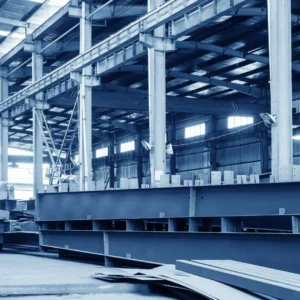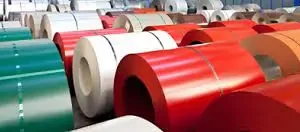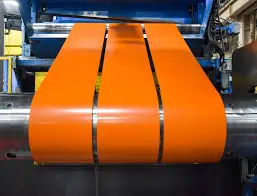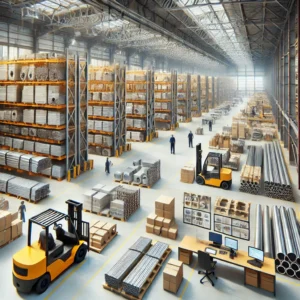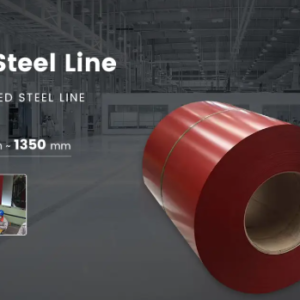Color-Coated Steel Strip Coils Price Guide 2025: Per Kg, Per Ton
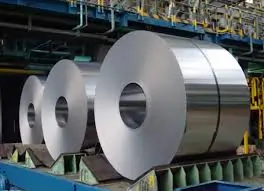
Color-coated steel strip coils, also known as pre-painted galvanized iron (PPGI) or pre-painted galvalume (PPGL) coils, are flat steel products coated with a layer of paint or polymer film after galvanizing. This process enhances both aesthetics and corrosion resistance, making them ideal for roofing sheets, wall cladding, appliances, furniture, and decorative applications.
Their key advantage lies in combining strength, formability, and visual appeal in a single product. Available in a wide range of colors, surface textures, and gloss levels, they meet both structural and design requirements.
What Determines the Price of Color-Coated Steel Strip Coils
The cost of these coils depends on several factors:
-
Base Metal Type – Cold-rolled, galvanized, or aluminum-zinc substrate affects base price and durability.
-
Coating Type – PE (polyester), SMP (silicone-modified polyester), and PVDF (polyvinylidene fluoride) coatings vary in cost and performance.
-
Coating Thickness – Measured in microns, thicker coatings improve lifespan but increase price.
-
Paint Quality – Premium paints with UV and chemical resistance command higher prices.
-
Order Quantity – Bulk orders reduce unit cost significantly compared to small lots.
-
Regional Logistics – Freight, port handling, and local distribution mark-ups influence final landed prices.
Price Per Kilogram
In 2025, bulk market pricing for standard commercial-grade color-coated steel strip coils generally falls between $0.54 and $0.62 per kg for large volume purchases directly from mills. These prices are common for PE-coated coils used in roofing and siding, based on standard coating weights and widths.
For premium PVDF coatings or specialized textures, the per-kg cost can rise to $0.70–$1.10, reflecting the higher price of advanced paint systems and tighter quality control.
Small-quantity purchases from local stockists tend to be higher, often in the $0.65–$0.80 per kg range due to storage, handling, and smaller lot economics.
Price Per Ton
Converting per-kg rates to per-ton prices gives buyers a clearer bulk procurement perspective:
-
Entry-Level/Budget Range: $400–$500 per ton – often for basic PE coatings, thin gauges, or lower zinc coating weights.
-
Mid-Range/Standard Grade: $520–$630 per ton – the most common range for building and roofing applications.
-
Premium Grade: $650–$1,100 per ton – for high-end PVDF coatings, extra-thick zinc layers, or decorative finishes.
Pricing also varies with steel thickness. Thicker coils not only weigh more per linear meter but also may require stronger substrates, raising the cost.
Regional Price Differences
China
As the largest global producer, China offers some of the lowest factory-gate prices for color-coated steel strip coils. Domestic bulk buyers pay $540–$620 per ton for PE-coated coils, while exporters can offer FOB pricing in the $500–$600 per ton range. Coastal provinces such as Shandong and Jiangsu remain cost-competitive due to large-scale production and port proximity.
Middle East
The Middle Eastern market relies heavily on imports from Asia. Landed CIF prices for standard PE-coated coils typically fall in the $650–$750 per ton range. Gulf states with stricter quality standards, especially for PVDF coatings, often see prices from $800 to $950 per ton.
Africa
Prices in Africa vary depending on port access. Coastal buyers sourcing directly from Asia often land coils for $620–$750 per ton, while inland regions can see surcharges of $50–$100 per ton due to transport. High-quality coated coils for large infrastructure projects may approach $900 per ton.
Applications Driving Demand
The price of color-coated steel strip coils also reflects their growing use across multiple sectors:
-
Construction – Roofing sheets, wall panels, gutters, and cladding.
-
Appliances – Refrigerator panels, washing machine covers, and microwave housings.
-
Furniture – Shelving, cabinets, and modular kitchen systems.
-
Transportation – Bus bodies, container walls, and trailer panels.
-
Industrial Uses – Storage tanks, ducts, and fabricated components.
This diversity of applications keeps demand steady, providing price stability despite raw material fluctuations.
Cost-Saving Strategies for Buyers
Bulk Procurement
Ordering full container loads directly from mills lowers per-unit costs and reduces handling fees.
Standard Specifications
Choosing common widths, thicknesses, and coating types avoids custom production surcharges.
Long-Term Contracts
Negotiating fixed-term supply agreements can shield buyers from sudden price spikes in steel or zinc.
Port Proximity
Sourcing from suppliers near major ports shortens logistics chains and lowers inland freight costs.
Market Outlook for 2025
Global demand for color-coated steel strip coils in 2025 is expected to remain strong, driven by continued urban development, renewable energy infrastructure, and the replacement cycle for older construction materials.
Prices are forecast to remain within their current bands, though short-term volatility is possible due to:
-
Zinc price fluctuations on commodity markets.
-
Shipping cost changes influenced by global trade conditions.
-
Seasonal construction booms, particularly in warm-weather regions.
Premium vs. Budget Segment Dynamics
While budget-grade coils dominate volume sales, the premium segment is growing faster, especially in climates requiring higher corrosion resistance and UV stability. Buyers in tropical and coastal regions increasingly prefer PVDF-coated coils despite higher upfront costs, given their longer service life and lower maintenance requirements.
Conclusion
In 2025, color-coated steel strip coils are widely available across global markets, with pricing ranging from $0.54 to $0.62 per kg for standard grades and up to $1.10 per kg for premium finishes. On a per-ton basis, this translates to $400–$500 for entry-level, $520–$630 for standard, and $650–$1,100 for premium coils.
China remains the most competitive source for large-scale purchases, while Middle Eastern and African markets depend on imports that reflect additional freight and handling costs.
For businesses, the key to cost-effective purchasing lies in balancing volume, specification, and supplier location. Those who can consolidate orders, accept standard coil dimensions, and source near ports will achieve the most competitive pricing while ensuring reliable quality for their projects.

